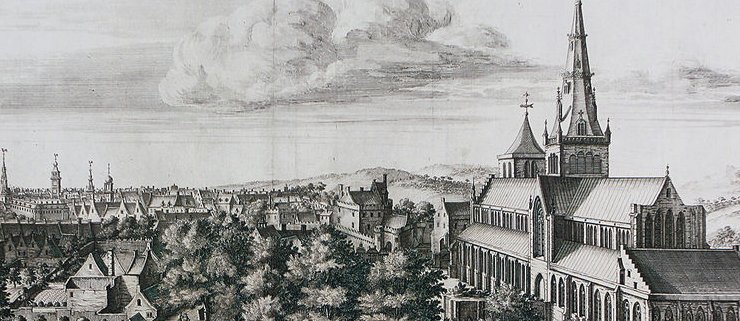The History of Glasgow Cathedral
The patron saint of Glasgow, Saint Mungo, is said to be buried here – at least, that’s what folklore tells us. He was the very first bishop in the British Kingdom of Strathclyde, dating back to the 7th century. And it’s in AD 612 that the legend truly begins…
It’s estimated that building began in the late 12th century with the aim of creating a seat for the Bishop of Glasgow. The building you see before you today, however, had most of its work done in following two centuries.
It’s currently regarded as being a primary example of the celebrated Gothic style, which is why it currently enjoys such popularity amongst tourists, artists, and historians alike. It’s also unique in that it’s the only example of a Scottish church that managed to escape the clutches of Scottish reformers.
The Current Congregation
Glasgow Cathedral isn’t just a beautiful building that seeped in tradition and history. It’s also a living and breathing church. In other words, it’s still an active part of the Christian community in Glasgow.
The congregation is part of the Presbytery of Glasgow – in other words, part of the Church of Scotland. The reformation changed a thing or two, however. You won’t find a Catholic anywhere near this ‘cathedral’ – find out why below.
Why a Cathedral?
So wait, it’s part of the Church of Scotland? How does that work? Well, it all has to do with the Scottish Reformation. When those pesky reformers decided that the man in the robe (aka the Pope) didn’t have the authority he claimed, they decided to stir up a bit of trouble.
It was actually quite a horrific period of Scottish history, regardless of whether they were right about papal authority. We’re talking thousands of deaths of innocent people, the destruction of countless Catholic Churches, and a struggle that wasn’t resolved for hundreds of years.
But before the Reformation, Glasgow Cathedral was the Roman Catholic so-called ‘mother church’ of the Archdiocese of Glasgow. In other words, it was pretty important for the garbed members of society.
Now, however, the building is not a cathedral. Call the title something akin to an honorary degree, a homage to its celebrated past. It’s not been a Cathedral since 1690!
Other Names…
When someone first asked me where the High Kirk of Glasgow was, I looked at them with a befuddled expression and sincere confusion. “Ohhhh, you mean Glasgow Cathedral?”
Yes, it has other names. You may also hear it referred to as St.Mungo’s Cathedral or St. Kentigern’s. That’s four separate names. Talk about making things a little confusing for the average tourist.
Who Owns the Cathedral?
Glasgow Cathedral is owned by the Crown (oh, how posh!). Maintenance is led by Historic Scotland, a great organisation that works for the preservation of monuments and buildings throughout the country. We highly recommend you visit other properties maintained by the organisation – you’ll find gorgeous examples of medieval castles, churches unique to Scotland, and a wide variety of other properties that are certain to please the history enthusiasts amongst you.



